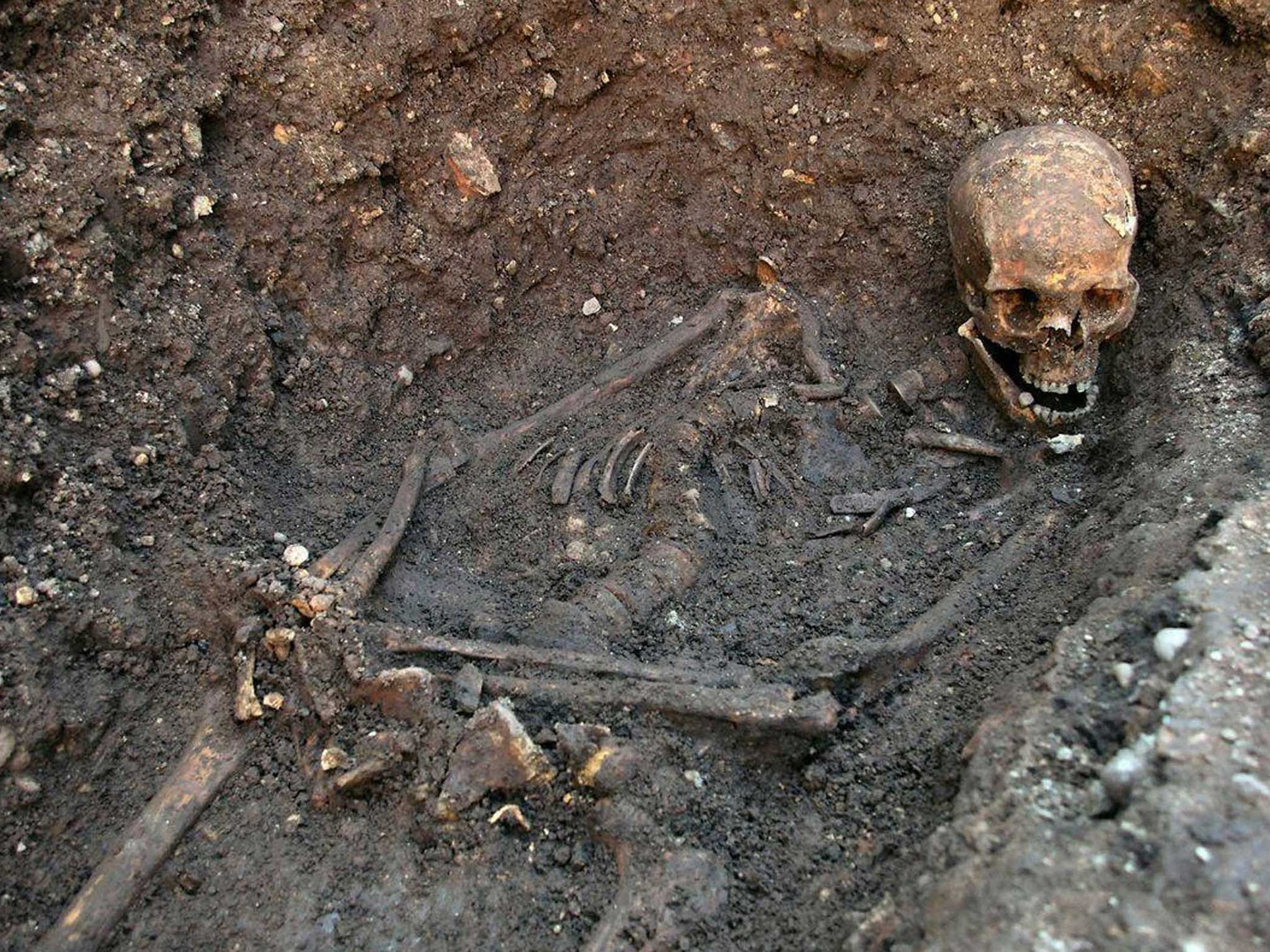An undignified end: Richard III was buried in 'hastily dug and untidy grave'

Your support helps us to tell the story
From reproductive rights to climate change to Big Tech, The Independent is on the ground when the story is developing. Whether it's investigating the financials of Elon Musk's pro-Trump PAC or producing our latest documentary, 'The A Word', which shines a light on the American women fighting for reproductive rights, we know how important it is to parse out the facts from the messaging.
At such a critical moment in US history, we need reporters on the ground. Your donation allows us to keep sending journalists to speak to both sides of the story.
The Independent is trusted by Americans across the entire political spectrum. And unlike many other quality news outlets, we choose not to lock Americans out of our reporting and analysis with paywalls. We believe quality journalism should be available to everyone, paid for by those who can afford it.
Your support makes all the difference.Researchers have revealed the remains of King Richard III, which were discovered under a city car park, were found in a hastily dug, untidy grave.
It is believed that gravediggers may have been in a hurry to bury the murdered king and that his hands could have been bound together. The lozenge-shaped grave was too short to contain the body conventionally and the bones of the last Plantagenet king were placed in an odd position, with the torso crammed in.
Academics from the University of Leicester added that someone is likely to have stood in the grave to receive the body, suggested by the fact the body is positioned to one side rather than placed centrally.
The discovery followed a three-week dig which started in August at what was once the medieval Grey Friars church in Leicester - now a Leicester City Council car park. Archaeologists announced in February this year that they had discovered the monarch's remains.
Findings by the University of Leicester Archaeological Services are revealed in the journal ‘Antiquity’ as part of the first peer-reviewed paper on the search for Richard III.
The paper outlines key findings from the archaeological investigation of the Grey Friars site. It includes analysis of Richard III's grave and explains the conclusions about the friary's layout based on the remains of the church and cloisters. It also includes initial observations of the condition of the king's skeleton.
Academics said that there were no signs of a shroud or coffin in Richard III's grave, in heavy contrast to other medieval graves discovered in the area which were the correct length and neatly dug with vertical sides.
This is in keeping with accounts from the medieval historian Polydore Vergil, who said Richard III was buried "without any pomp or solemn funeral".
The paper is being made publicly available at antiquity.ac.uk/ant/087/ant0870519.h
Additional reporting by PA
Join our commenting forum
Join thought-provoking conversations, follow other Independent readers and see their replies
Comments